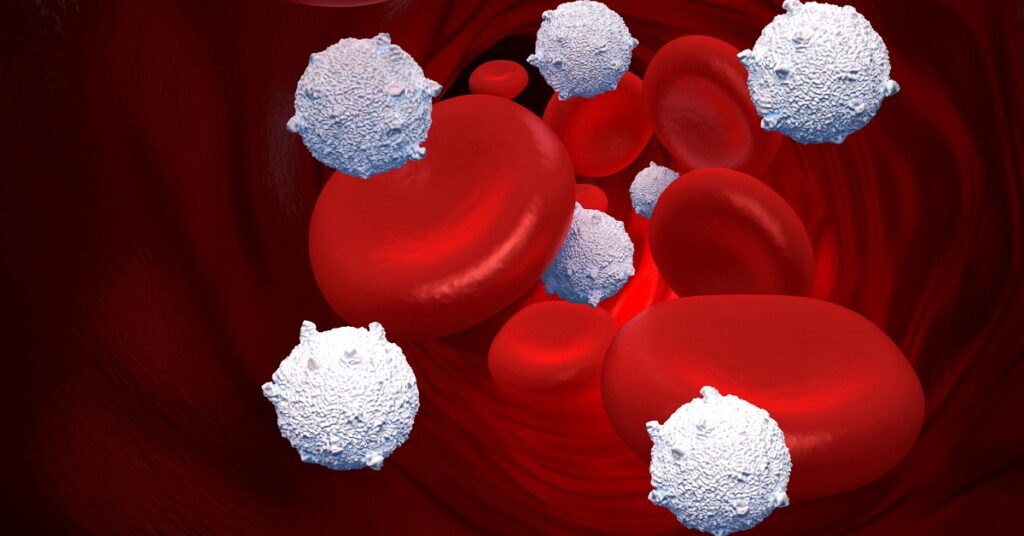News
New DoCR publication in PNAS sheds light on how cancer cells avoid the immune system

A confocal microscopy image showing a cancer cell on the right reorganizing its actin cytoskeleton (green) towards an attacking NK cell (purple) on the left.
Scientists from the Cytoskeleton and Cancer Progression group at the Department of Cancer Research have discovered a new mechanism used by tumor cells to escape the immune system. A recent article from the group reveals an important piece of the puzzle that is the interplay between cancer and the immune system.
Natural Killer (NK) cells are key players in the fight against cancer. Acting as the frontline defenders of the immune system, they hunt down, recognize and rapidly destroy threats. Their role in immune surveillance is critical. It is not surprising then that cancer cells have evolved sophisticated techniques to escape these defenses.
When approaching a potential target, NK cells must decide whether or not to eliminate it. This decision is based on a balance of activation and inhibition signals that NK cells detect via contact with the target cell. Healthy cells typically display high levels of inhibitory molecules that signal NK cells to spare them. Tumor cells, on the other hand, often express fewer such inhibitory markers. Nevertheless, they are able to use a clever tactic to avoid destruction: when an NK cell makes contact, the cancer cell rapidly recruits inhibitory surface molecules to the contact zone, a.k.a. the immunological synapse, immediately dampening NK cell activity.
The Cytoskeleton and Cancer Progression group, directed by Clement Thomas, previously identified the importance of the internal scaffolding of cancer cells, known as actin filaments, in promoting tumoral resistance to NK cell attack and in their recent paper, “Cancer cells suppress NK cell activity by actin-driven polarisation of inhibitory ligands to the immunological synapse”, the group describes how tumors use these actin filaments to transport the necessary inhibitory signals. When this actin-based transport is blocked, NK cells regain their power and are effective in killing cancer cells. This research highlights that the quick spatial reallocation of key molecules is a pivotal feature used by cancer cells as a defensive weapon.
One of the most striking aspects of our findings is how quickly tumor cells react when faced with an NK cell. Within minutes, they reorganize actin filaments and shift key surface molecules into the contact zone to protect themselves. This shows that cancer cells can sense the attack coming and rapidly put up a shield,
explained Clement Thomas, group leader of the Cytoskeleton and Cancer Progression group.
A long standing enigma perplexing researchers is how tumors manage to not only evade NK cells, but also cytotoxic T cells, other key line of defense. Paradoxically, the very same signal molecules that act as inhibitory signals for NK cells act as activation signals for T cells. While the mystery is still unsolved, the new results help explain how tumor cells maintain their resistance to NK cells, even after lowering molecules on their surfaces to escape T cells.
“What we don’t yet know is what triggers this reaction. Which signals inside the tumor cell tell it to move these ‘don’t-kill-me’ signals into place at the moment an NK cell arrives? Understanding this internal alarm system, and how it controls the movement of these inhibitory signals, is essential. By uncovering these pathways, we hope to find new ways to block the tumor’s response. More importantly, this knowledge could help us design improved NK cells that don’t trigger this defensive maneuver in the first place. In the future, this could lead to therapies that keep NK cells active and effective, even against tumors that have learned to fight back,” says Clement Thomas.
Funding
The study was supported by grants from the Luxembourg National Research Fund (FNR; SYNAPODIA project) and Cancer Foundation Luxembourg, and by additional funding from Think Pink Luxembourg, F.R.S.-FNRS-Télévie, and Luxembourg’s Ministry of Higher Education and Research.







